Yield indicators for raspberry cultivation will directly depend on correctly conducted events after its bearing. Particular attention must be paid care for raspberries in the fall and prepare for winter. Such work involves cutting, dressing, processing and warming the bush. Even a novice gardener will cope with this.
Content
Culture Description
Raspberry is a perennial shrub with a winding powerful rhizome and numerous upright upright shoots, the height of which can reach 2.5 meters. In the first year of vegetation, grassy shoots with thin, barely noticeable spikes. In the second year of life, they acquire a brown color, become stiff and begin to bear fruit. After the fruiting period ends, the branches die, and a new stem grows from the root bud in the spring.
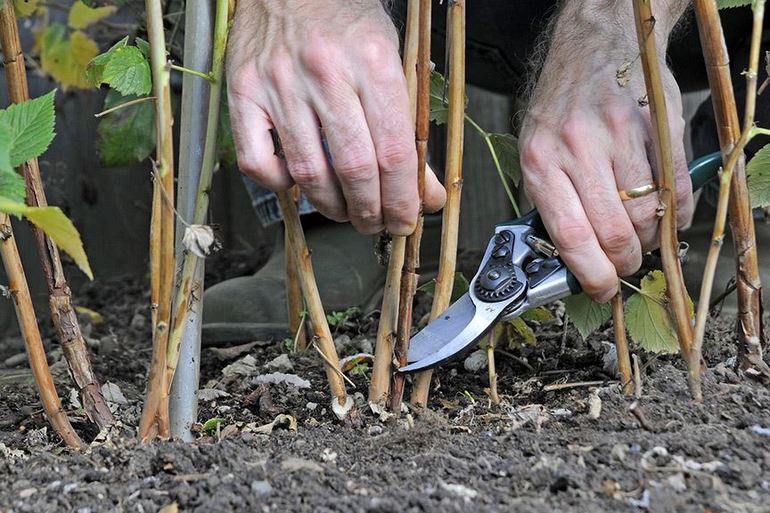
Raspberry - unpretentious shrubHowever, to achieve good yield, stable growth and the absence of fungal and infectious diseases in this plant can only be ensured by appropriate proper care. Such bushes will require the greatest attention in the fall, when they are necessary not only trim properly, but also to feed, cover with mulch or fir spruce branches, which will allow plantings to easily withstand even frosty winters.
Autumn planting care
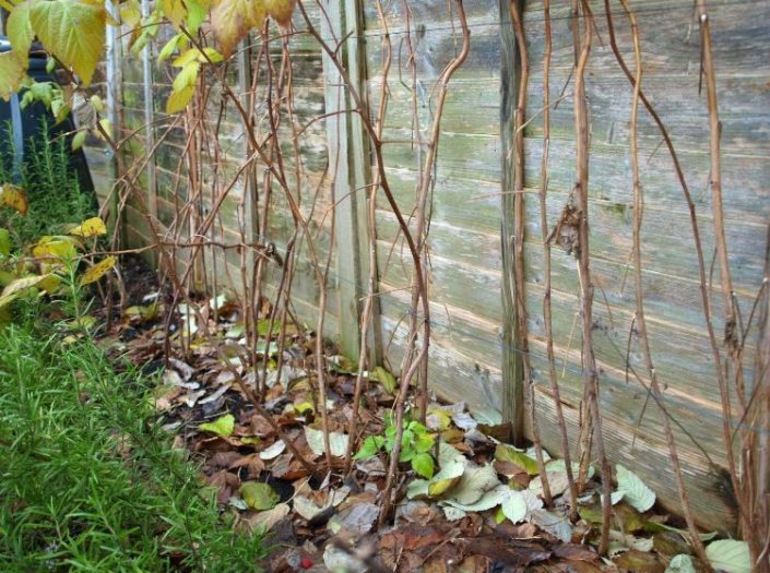
In autumn, after harvesting and with the onset of the first cold weather, raspberry trees will require special care. It is from the fulfillment by the gardener of all the obligatory agrotechnical measures that the fruiting of this berry crop next year will directly depend.
Properly prepared for the cold plants will have the strength necessary for wintering, and in the spring they will quickly move away from sleep, be able to build up green mass and give the gardener an excellent harvest. Autumn care for raspberries and its preparation for winter implies top dressing, pruning, preventative treatment and regular watering.
Raspberry pruning
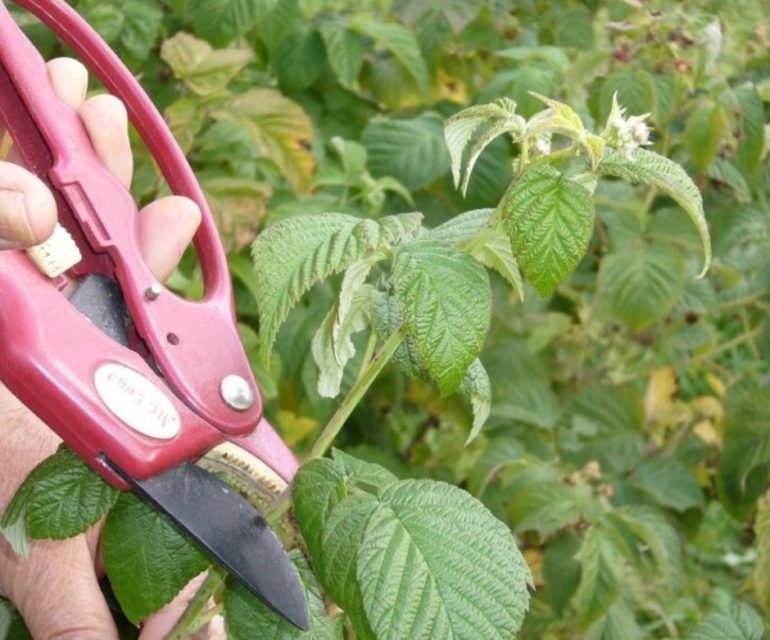
One of the most important procedures is shrub pruning, the success of plant wintering and their subsequent fruiting will depend on this. Homemade raspberrieshas a two year vegetation cycle. That is, in the first year, the shoots do not bear fruit, and berries are harvested only from two-year-old branches.
After such fruiting, the shoots are trimmed, which allows you to update the bush, ensuring its proper growth, while preventing thickening of the plantings. If a gardener neglects autumn pruning of raspberries, the thawed branches turn into prickly jungles, various infectious diseases appear, and yield indicators are significantly reduced.
An adult plant, subject to high-quality top dressing and a developed root system, is able to form more than 20 powerful young stems during the growing season. The gardener needs not only to trim the old thawed branches, but also to control the number of new young shoots. They take away strength and nutrition from the fruiting branches, respectively, the yield indicator decreases.In addition, excess young shoots can lead to thickening of the bush, which negatively affects the growth rate, there are problems with air circulation and, as a result, all this leads to the appearance of fungal diseases.
Experienced gardeners are well aware of what to do with raspberries in the fall, and recommend performing early pruning immediately after the completion of the berry harvest. In this case, all the life forces of the raspberry will be directed to the formation of growing young lashes, which can harden even before the onset of the first frosts. Subsequently, such correctly wintered branches will bear fruit excellently, guaranteeing a plentiful harvest in the next season.
Raspberry pruning is done as follows:
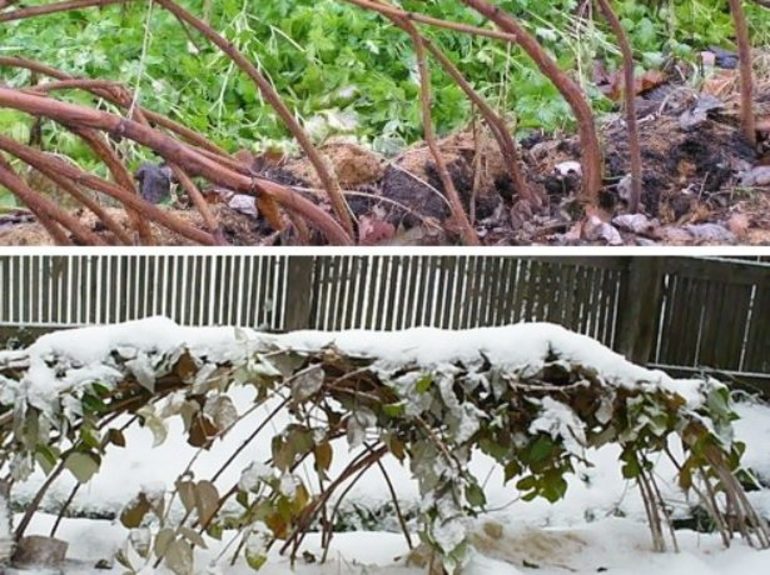
- Last year's shoots that cut off are cut off.
- Stems are cut out by sick and diseased insect pests.
- Thin, broken, twisted and elongated trunks are removed.
- The immature young branches are cut off, which have just appeared and do not have time to numb before the winter.
- Remove extra shoots, preventing thickening of the bush.
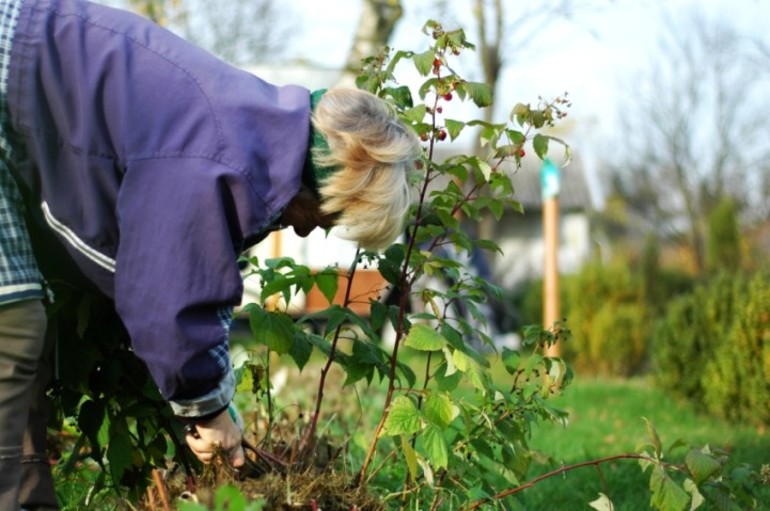
All branches are cut to ground level. It is forbidden to leave hemp, as insects can settle in them. Plant debris, including branches and leaves, should be burnt away from the bush. For such work, a high-quality disinfected tool is used: saw, secateurs and brush cutters.
Shrub top dressing
After trimming raspberries, garbage should be removed and weeding should be carried out, removing all weeds. Be sure to collect and burn fallen leaves, as various harmful insects often winter in such litter.
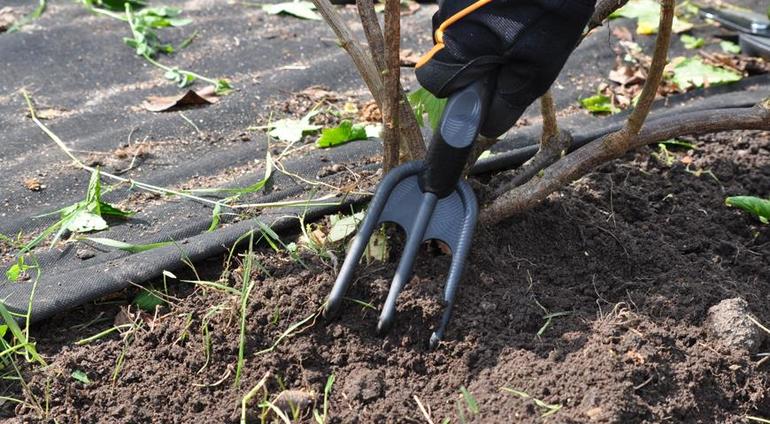
Weakened after pruning and fruiting, the plants are fed, which allows them to accumulate the necessary nutrients for the winter colds and the growing season next year. In the fall, organic fertilizers and mineral fertilizers are used for this. Ideally, it is better to alternate them after a year: in the first year, add organic matter, and next fall - mineral fertilizing.
Self-preparation of mineral top dressing is possible. Composition per bush:
- Potassium Monophosphate - 40 grams.
- Potassium salt - 40 grams.
- Superphosphate - 60 grams.
- Wood ash - 200 grams per 10 squares of beds.
- Rotted manure - 6 kg per square meter of area.
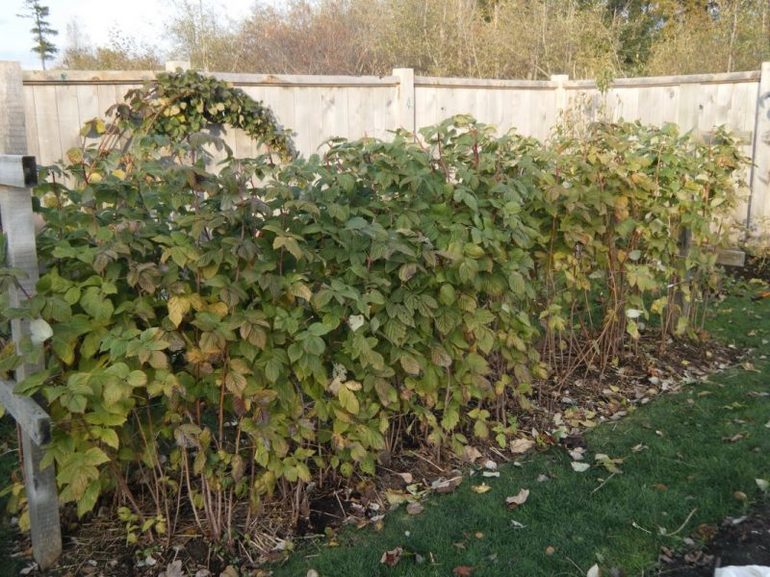
Beginning gardeners are advised to use ready-made mineral complexes that are specifically designed for raspberries, strawberries and strawberries. Such fertilizers have an optimally selected composition, their application does not present any difficulty, and the plants themselves receive all the necessary trace elements, providing the most abundant fruiting in the next year.
It is only necessary to fully follow the dosage, timely conducting such autumn feeding of plants. Thanks to the use of ready-made compounds, raspberry care in the fall and preparation for shrub winter is greatly simplified.
Preventative treatment
Regardless of whether there are traces on plants damage to foliage by insect pests or pathogenic bacteriaIt is recommended that appropriate processing of raspberries in the fall to winter. Such spraying is not particularly difficult. In gardening shops you can find various fungicides and herbicides that are effective and completely safe to use.
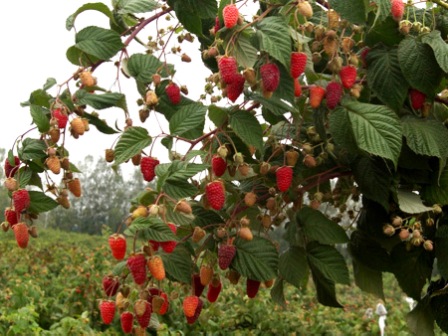 You may be interested in:
You may be interested in:You can process raspberries with the following tools:
- Bordeaux fluid.
- Copper sulfate.
- Inkstone.
- Fufanol.
- Intavir.
- Actellik.
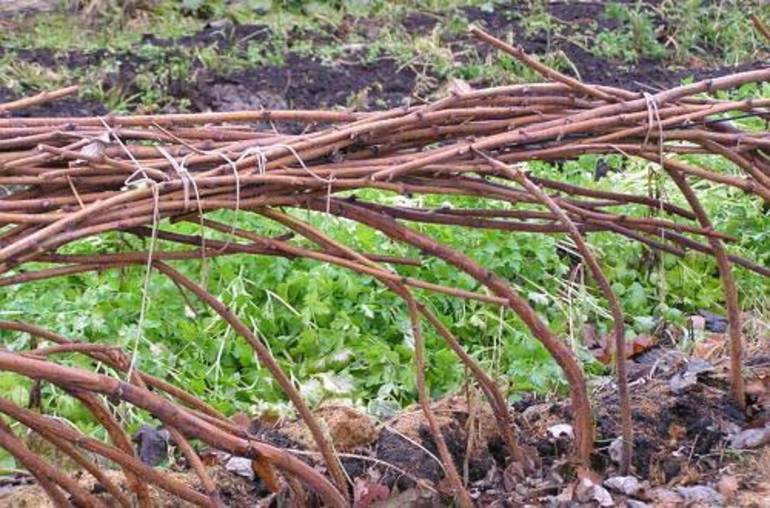
Concentrates, dry powders or tablets should be diluted correctly in clean, decanted water. The gardener needs to properly care for the plantings and must follow the recommended dosages, which will destroy pests and prevent the occurrence of infectious diseases in the bush. Spraying is best done using special spray guns, doing this work in the early morning or evening in calm, calm weather.
Winter preparations
After pruning, preventive treatment and top dressing, you can proceed directly to the preparation of the shrub for winter. Such work involves the following actions of the gardener:
- Mulching the soil.
- Tying shrubs and bending them to the ground.
- Shelter for the winter.
- Arrangement of snow retention.
Such works are not particularly difficult, so they are quite capable of being carried out independently even by a novice gardener. It is best to prepare the plants in the winter in early October, when the weather is still relatively warm without the first frost. In each case, the timing of the preparation of raspberries for winter is selected based on climatic conditions in the region and weather forecasts for the coming days.
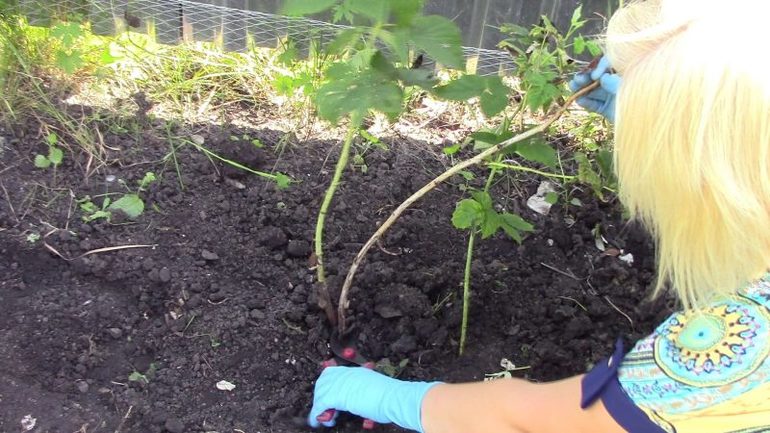
Branches must be carefully bent to the ground and tied up. The optimum height is 30-50 cm, depending on the average annual volumes of snow that should completely cover the plants. Before the onset of cold weather, the stems bend with ease, which allows you to perform this procedure without damaging the bush. But after the first cold weather, the shoots become brittle and brittle, so to tie and bend them to the ground will not work.
In the northern regions, where temperatures in winter can drop to 30 degrees or lower, raspberries need additional warming. The following materials may be used for such work:
- Loose earth, peat or humus.
- Lapnik.
- Non-woven covering fabrics and agrofabric.
In the middle zone of Russia there will be enough arrangement of high-quality snow retention, which will eliminate the need for additional insulation of the facade. For the formation of such snow cover, it is necessary to install special snow-holding devices. Polycarbonate sheets or plywood panels may be used staggered into the ground with twigs, stalks of corn or sunflower.
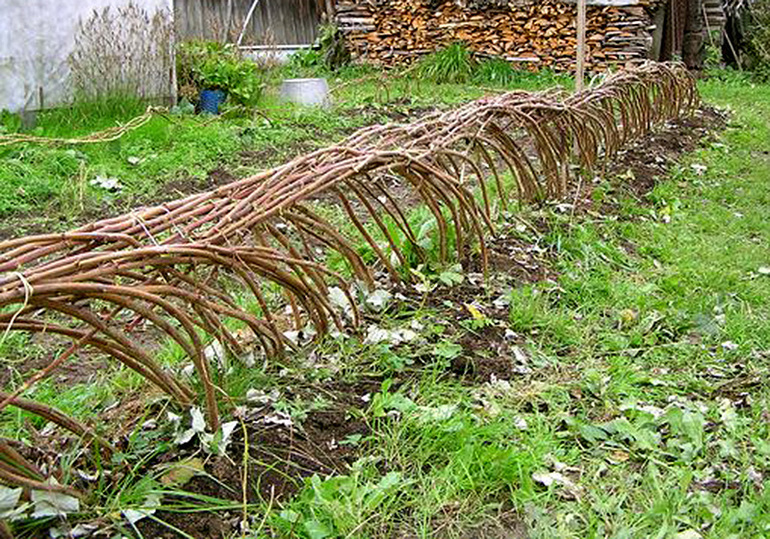
For proper insulation of the bush, the thickness of the snow cover should be at least 1 meter. The gardener can specially rake the first snow that falls, covering them with raspberry branches bent to the ground. This will protect the plants from the cold and greatly simplify the preparation for winter and care for raspberries in the fall.
Preparing raspberries for winter in the fall in the suburbs and in the Urals is not particularly difficult. Such work will allow the gardener in the future can get an excellent harvest.For this, timely top-dressing, pruning and processing from pests, as well as proper plant insulation with the installation of snow-holding structures, mulching the soil and additional shelter with spruce or agrofiber in the northern regions are needed.


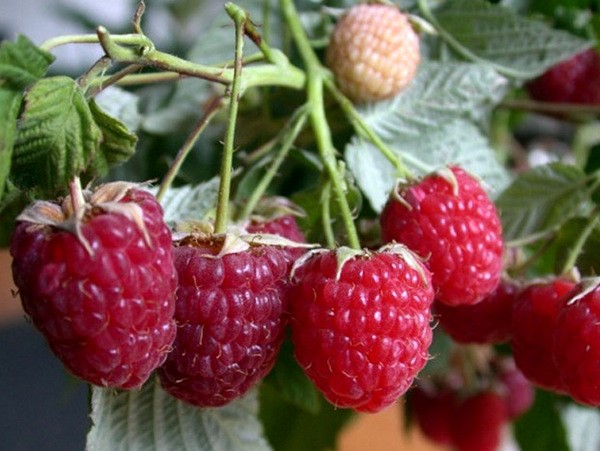
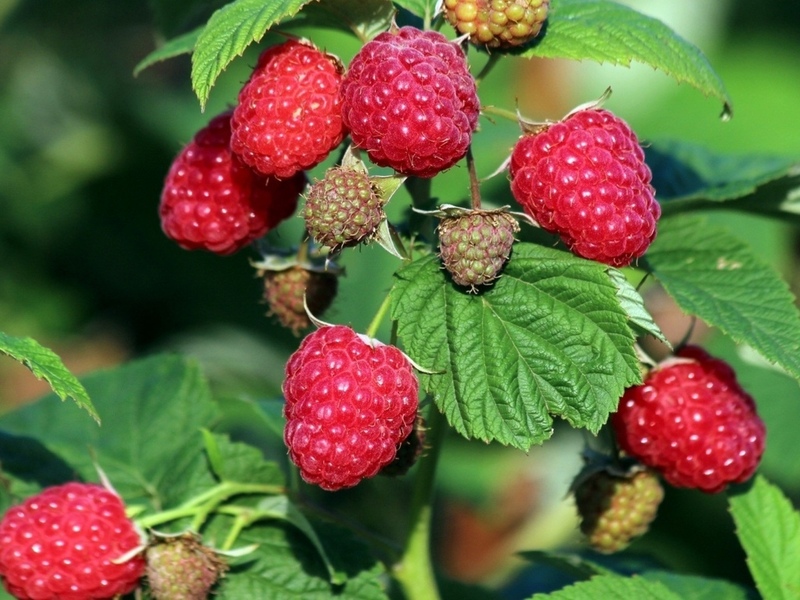
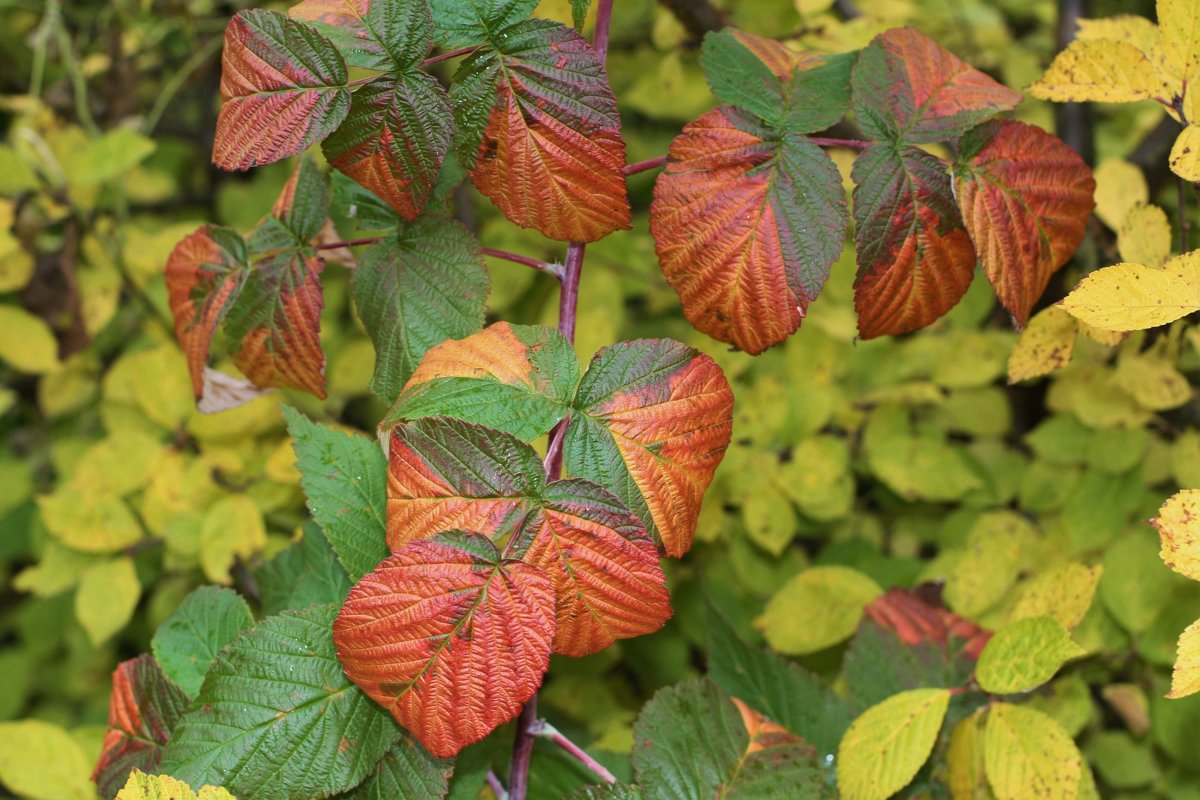 Black raspberries in autumn: care and preparation for winter shelter, pruning
Black raspberries in autumn: care and preparation for winter shelter, pruning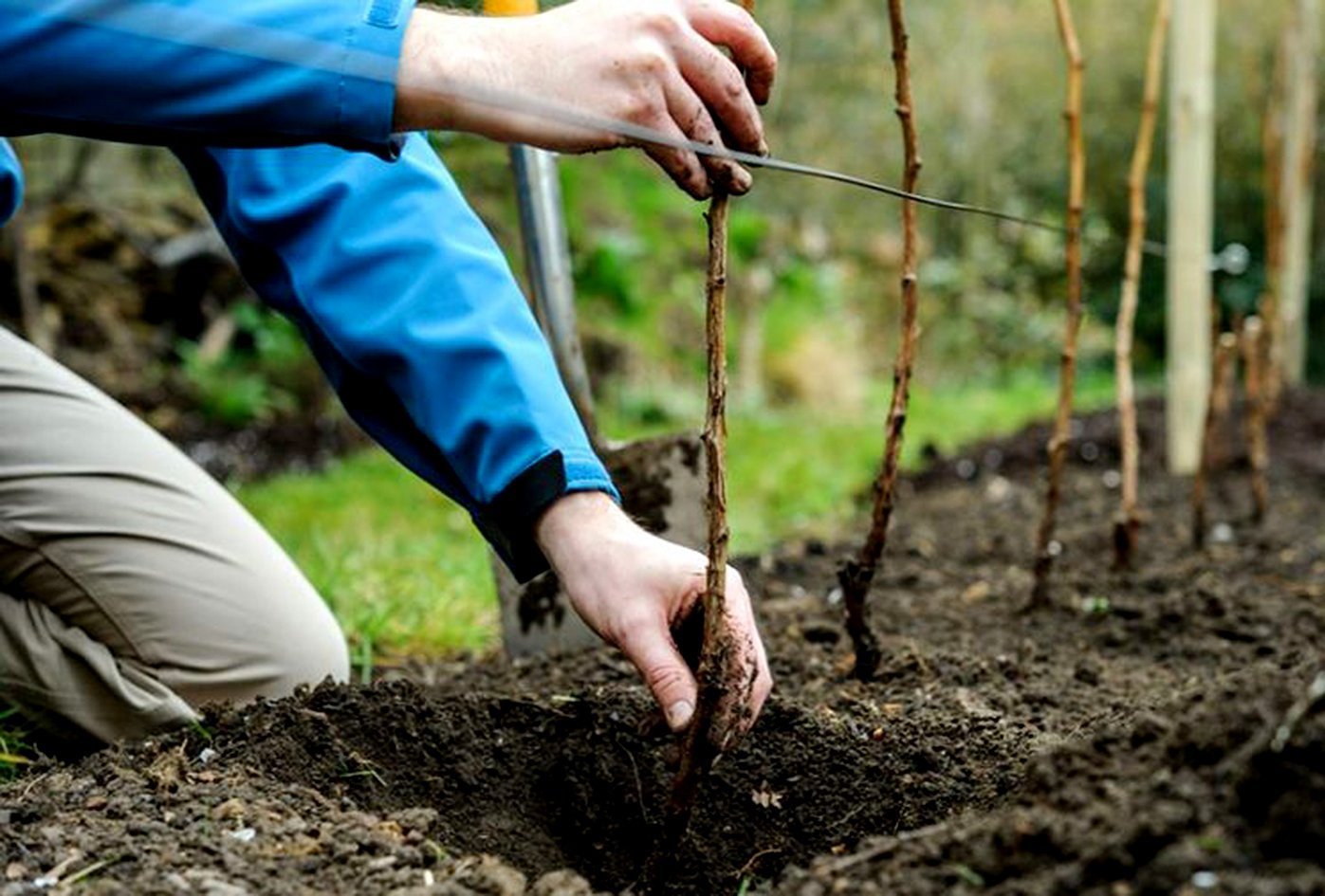 Features planting raspberries in the fall and care for it
Features planting raspberries in the fall and care for it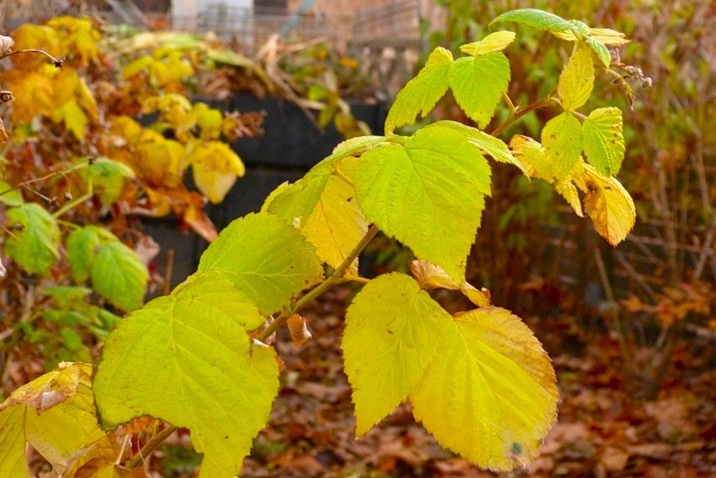 Proper care for raspberries in the fall and its preparation for winter
Proper care for raspberries in the fall and its preparation for winter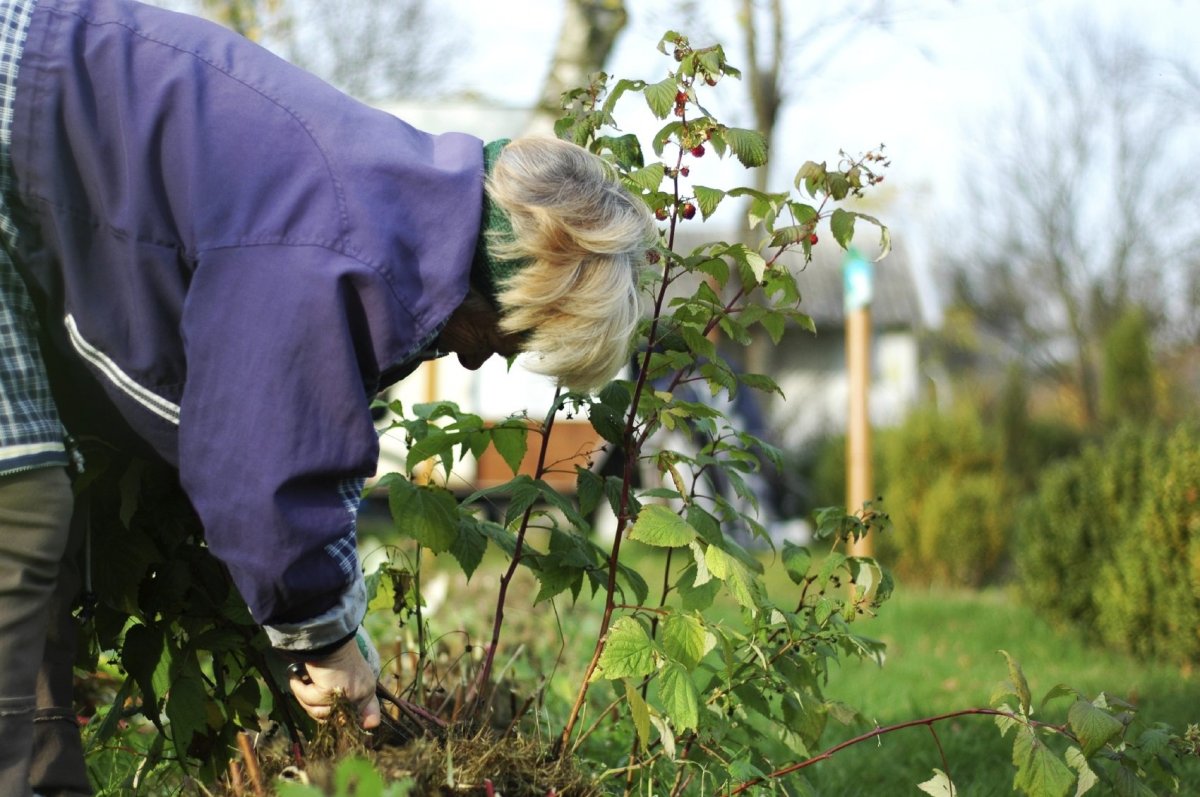 Care for maintenance raspberries in autumn: pruning and top dressing
Care for maintenance raspberries in autumn: pruning and top dressing